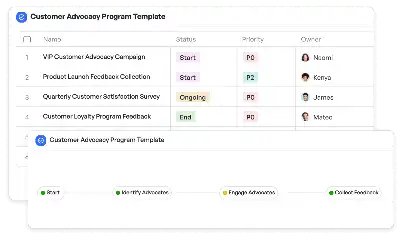Data Augmentation Strategy Documentation
Achieve project success with the Data Augmentation Strategy Documentation today!

What is Data Augmentation Strategy Documentation?
Data Augmentation Strategy Documentation serves as a comprehensive guide for implementing data augmentation techniques in various machine learning and AI projects. Data augmentation is a critical process in artificial intelligence, where existing data is expanded through transformations such as rotation, flipping, cropping, or noise addition. This documentation is essential for ensuring that teams can systematically apply augmentation strategies to improve model robustness and accuracy. For instance, in image recognition tasks, augmenting datasets with variations can help models generalize better to unseen data. The importance of this documentation lies in its ability to standardize augmentation practices, making it easier for teams to replicate and scale their efforts across projects.
Try this template now
Who is this Data Augmentation Strategy Documentation Template for?
This template is designed for data scientists, machine learning engineers, and AI researchers who are actively involved in developing and deploying machine learning models. It is particularly useful for teams working in industries such as healthcare, retail, finance, and autonomous vehicles, where data quality and diversity are paramount. Typical roles that benefit from this documentation include data engineers responsible for preprocessing data, machine learning engineers optimizing model performance, and project managers overseeing AI initiatives. By providing a structured approach to data augmentation, this template ensures that all stakeholders can collaborate effectively and achieve their project goals.

Try this template now
Why use this Data Augmentation Strategy Documentation?
Data Augmentation Strategy Documentation addresses several pain points in machine learning projects. One common challenge is the lack of sufficient training data, which can lead to overfitting and poor model performance. This documentation provides detailed guidelines on how to augment datasets effectively, ensuring that models are exposed to a diverse range of scenarios. Another issue is the inconsistency in augmentation practices across team members, which can result in suboptimal outcomes. By standardizing the process, this template ensures that all team members follow best practices, leading to more reliable and reproducible results. Additionally, the documentation includes industry-specific augmentation techniques, such as applying domain-specific transformations for medical images or financial time-series data, making it highly relevant and practical for real-world applications.

Try this template now
Get Started with the Data Augmentation Strategy Documentation
Follow these simple steps to get started with Meegle templates:
1. Click 'Get this Free Template Now' to sign up for Meegle.
2. After signing up, you will be redirected to the Data Augmentation Strategy Documentation. Click 'Use this Template' to create a version of this template in your workspace.
3. Customize the workflow and fields of the template to suit your specific needs.
4. Start using the template and experience the full potential of Meegle!
Try this template now
Free forever for teams up to 20!
The world’s #1 visualized project management tool
Powered by the next gen visual workflow engine




